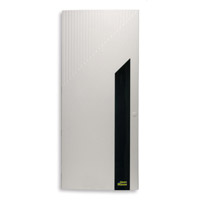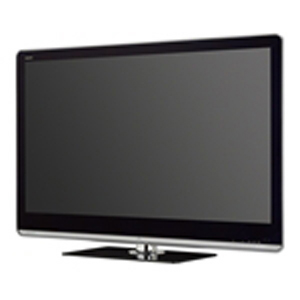“Home cabling systems are no different than commercial systems, they often contain a mix of broadband (coax) cables, and twisted pair cables carrying voice, data, and security signals. The components and connectors for these systems have been tried and proven in the commercial industry and there is no reason to reinvent them for the HCS industry.”
It used to be rare that you’d see a home wired with basic-quad cable in more than a couple of rooms for phone service. Now it’s quite common for new houses to be built with multiple data-grade cables in all rooms (including bathrooms). Home cabling systems have only recently begun to gain any real attention, and like any new technology there seems to be a lot of different ideas on how to ‘do it right’. This series will describe some of the basic components and concepts of a good home wiring system, and explain how to choose and install the right pieces to make your system work the way you planned.
With the rise in popularity of residential cabling, several vendors have come out with their interpretation of the ‘best’ home cabling system (HCS). In my experience I have yet to find one of these systems that truly meets all of the factors of a good HCS:
1: Ease of installation.
You’ll find cable bundles a popular offering from several HCS product lines. These bundles usually consist of two Cat5 cables, two RG6 cables and maybe 2 fiber optic cables. At first these seem like a great time saver, but they have many drawbacks:
These cable bundles are often more difficult to pull than pulling the same number of ‘loose’ cables. A common problem is with the bundling medium, (usually a fibrous ribbon, or cellophane) it can get easily caught on rough holes in studs, etc. With the cables tightly bundled together it can often be difficult to pull the cable bundle around a corner, or through a hole that’s not drilled straight through (as in when you’re drilling into studs without a right-angle drill.)
They may not be easier to pull, but you’d at least expect that these bundles would be cheaper than buying the same kinds of cable individually, but that’s not usually the case either.
Also, you’ll find that many outlets require more or less than the number cables found in a bundle. You may only want one RG-6 and one Cat-5 in a bathroom location for instance, or you may want 4 Cat-5’s and 2 RG-6’s in the computer room. This requires you to either untangle (and possibly waste) wires from the bundle, or buy additional extra spools of all of your cable types, driving the cost up higher, and almost guaranteeing a lot of waste.
In commercial applications it’s very rare that cable bundles (even bundles of all the same type of cable) are ever used. Sure, there’s always an exception, but often these bundles are made up of cable types or colors for a specific job, and not for ‘general use’. It’s much easier to have 2 or 4 individual boxes of cable, and pull them all at the same time.
It’s not just the cable bundles that can make installation difficult, often the cabinets for these systems are overly bulky, and don’t provide enough room to route the amount of cable necessary for a good installation.
If that’s not enough, try to find a local retailer that can sell you an extra piece or two as a walk-up customer should you need something in the future.
2: Expandability.
One of the things most all HCS offerings have in common is their ‘gee-whiz’ cabinet, with smoked glass, and/or ‘snap-in’ modules for various services. This seems like an elegant solution at first, but you’re typically limited in the maximum size of the cabinet offerings. Creating a cable system for even a modest home can easily over-fill one of these cabinets.
Cable systems have existed in commercial industries for years, and other than a few different styles of floor-mount and wall mount 19″ racks, nobody has ever successfully launched a gee-whiz cabinet system in the commercial industry. Home cabling systems are no different than commercial systems, they often contain a mix of broadband (coax) cables, and twisted pair cables carrying voice, data, and security signals. The components and connectors for these systems have been tried and proven in the commercial industry and there is no reason to reinvent them for the HCS industry. A good HCS system should be expandable in a vendor independent way, the popular HCS systems on the market today do not meet this by a long shot.
3: Outlet flexibility
Fortunately, this is starting to change, and many vendors are going to the ‘modular’ or ‘keystone’ style of outlets. These have a faceplate with 1-6 square cutouts that accept any combination and color of Cat5/Cat3/RJ-45/RJ-11 jacks, BNC/Coax outlets, Fiber Optic Outlets, Speaker binding posts and outlets, and blanks to fill in unused holes. Some manufactures (like ICC) offer outlet plates that tilt the outlets 45° towards the floor to allow furniture to be placed next to the wall, without binding or crimping the cables. Make sure that your outlets are configurable (and re-configurable) and not pre-set to the manufacturers ideas.
4: Tool-less future reconfigurations
This is one area where the ‘big-name’ HCS systems usually excel over the consumer designed and installed systems. When you want to change the service on a particular outlet, you don’t want to be hunting for punch-down tools and whatnot in the future, you want to go down to the wiring closet, pick up the appropriate patch cable, plug the two ends in, and walk away. Fortunately, it’s easy to design your own system to work like this if you plan in advance.
Before we go any further, it would probably be beneficial to describe some of the common components in an HCS installation.
Cable types:
Cat-5, Category-5 – Cat-5 is a term you’ll hear often when discussing any type of datacomm cable system. Cat-5 refers to the cable’s ability to meet minimal requirements for speed and noise rejection. Cat-5 cable can carry data at a minimum of 100Mhz (Notice this specifies Mhz, and not Mbs), and reject certain kinds of noise. Cat-5 cable usually consists of 2-25 pairs of cable. Each cable pair is twisted together at a pitch of about 3 twists per inch, and the pitch varies between each pair in the outer jacket, or sheath. The most common configuration of Cat-5 cable is 4 pairs in a PVC jacket. Cat-5 is a type of twisted pair cable (but not all twisted pair cable is Cat-5). Cat-5 is the highest recognized specification, but Cat-6 and Cat-7 specifications are expected shortly.
RG-6 – RG-6 is a type of coaxial cable, used typically for carrying video signals, such as CATV signals, DSS signals, and video camera signals in a typical HCS environment. Sometimes RG-59 is substituted for RG-6, but this is not recommended. RG-6 has a thicker center conductor, and a better shield, allowing for better signal quality, better interference immunity, and longer working distances than RG59.
Quad-cable – Quad cable refers to 4 conductors (typically non-twisted) in a PVC jacket. Quad cable is generally only used for contact-closure systems as in alarm systems. Quad cable shouldn’t be installed or used to carry data or telephone signals.
Fiber Optic – Fiber optic cables are long, thin strands of glass or plastic used to carry light over long distances and/or at very high speeds. Fiber optic cables are rarely installed or recommended in a typical HCS.
Connector types:
Cat-5 – A Cat-5 connector is generally either a male or female RJ-45 jack or plug. RJ-45 jacks are similar to the RJ-11 jack in a phone connection, only they have 8 contacts, instead of 4 (or 6).
RJ-11 – An RJ-11 jack is used almost exclusively in phone outlets. Some IR distribution systems use RJ-11 outlets also. RJ-11’s have spaces for 6 conductors, with 4 conductors usually present.
F – F Connectors are most commonly found on CATV equipment or jacks. They are the threaded connectors that you connect the CATV feed to.
BNC – BNC is another type of coaxial connector. Most commonly found on VHF/Radio equipment, or in 10-Base2 Ethernet. BNC Connectors are neither threaded or friction fit, instead they have two ‘nubs’ on the outlet, and the plug has two grooves, when the plug is fully inserted into (or actually over) the outlet you give the plug a ½ turn to lock the two together (sort of like a bayonet mount).
RCA – RCA jacks look like a smaller version of an F connector. They are also friction-fit, so they have no threads, RCA’s are typically used in A/V equipment for audio connections, and composite video connections.
SC – An SC connector is a type of fiber-optic connector. They look like a small square with a circle in the middle. You can remember SC as ‘Stick and Click’, because they make a click when the jack is fully inserted into the outlet.
ST – Another type of fiber optic connector. ST looks like a small BNC connector. ST can be remembered as ‘Stick and Twist’
Devices:





By Brian Karas
http://www.hometoys.com/htinews/oct98/articles/karas/cabling01.htm
Custom Installation Services, LLC – Charlotte and Asheville NC’s Source For Your Custom Home Electronics and Structured Wiring Needs!






